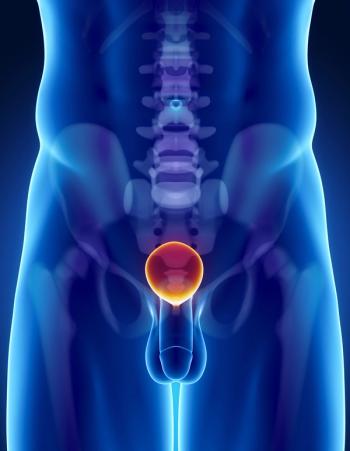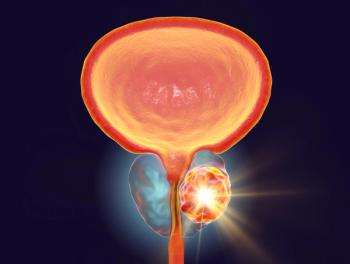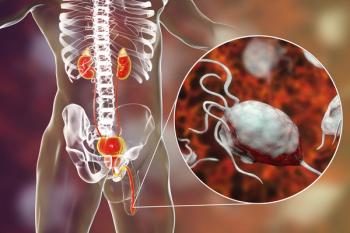
Oncology NEWS International
- Oncology NEWS International Vol 4 No 8
- Volume 4
- Issue 8
New Depot Formulation of LHRH Analogue Allows 12-Week Dosing
LAS VEGAS--A new, longer duration formulation of an LHRH (luteinizing hormone releasing hormone) analogue for advanced prostate cancer offers more convenient dosing and appears to be safe and effective.
LAS VEGAS--A new, longer duration formulation of an LHRH (luteinizinghormone releasing hormone) analogue for advanced prostate canceroffers more convenient dosing and appears to be safe and effective.
Two randomized studies presented at the American Urological Associationannual meeting compared the new formulation, a 10.8 mg depot ofgoserelin acetate (Zoladex), with the 3.6 mg depot of the sameagent.
At a poster session, Frans N.J. Debruyne, MD, University Hospital,Nijmegen, the Netherlands, said that while the 3.6 mg depot requiresmonthly visits to physician offices or clinics, the 10.8 mg depotis replaced at 3 months, an interval coinciding perfectly withthe follow-up schedule of patients with metastatic prostate cancer.
In the two comparative studies presented by Dr. Debruyne, involvinga total of 160 patients with advanced prostate cancer, patientsreceived either a single 10.8 mg depot or three consecutive 3.6mg depots over weeks 0 to 12. Subsequently, all patients receivedthree consecutive 10.8 mg depots over weeks 12 to 48.
Evaluations of the testosterone profiles of patients receivingthe different regimens revealed similar patterns. The expectedtestosterone level rise in the first week was followed by rapiddeclines to within the castrate range by day 21. Mean testosteronelevels in both studies during weeks 4 to 12 were 0.64 nmol/L and0.69 nmol/L for the 10.8 mg and 3.6 mg depot groups, respectively(P = .53).
Levels remained in the castrate range (0 to 2.50 nmol/L) throughoutthe 48-week study period, Dr. Debruyne told Oncology News International.
Adverse events (mostly hot flushes) for patients receiving the10.8 mg depot were comparable to those seen in the 3.6 mg depotgroup. Also, the depot was well tolerated locally, with injectionsite reactions reported for only 0.3% (2) of 614 administrations.
"These studies demonstrate that the new 10.8 mg depot ispharmacody-namically equivalent to the current 3.6 mg depot witha similar safety profile," Dr. Debruyne said. "It willoffer improved convenience to both patients and clinicians."He added that the 12-week dosing would be likely to improve complianceand reduce the costs associated with depot administration.
Articles in this issue
over 30 years ago
CA 125 Predicts Response to Chemo in Ovarian Caover 30 years ago
Biochemical Modulation Promising in RT-Resistant GI Cancerover 30 years ago
Cancer Institute of NJ Adds to its Staffover 30 years ago
A Century of Breast Cancer Litigation Is 'Deconstructed'over 30 years ago
NSABP Investigation Threatens Academic Freedom for All: Fisherover 30 years ago
Cancer Fax Directory in 3rd Editionover 30 years ago
HIV-Related Malignancies Increasing, Physicians Tell Panelover 30 years ago
Breast Cancer Risk Factors Remain Elusive Targetover 30 years ago
Conference Celebrates 100 Years of RadiologyNewsletter
Stay up to date on recent advances in the multidisciplinary approach to cancer.
















































































